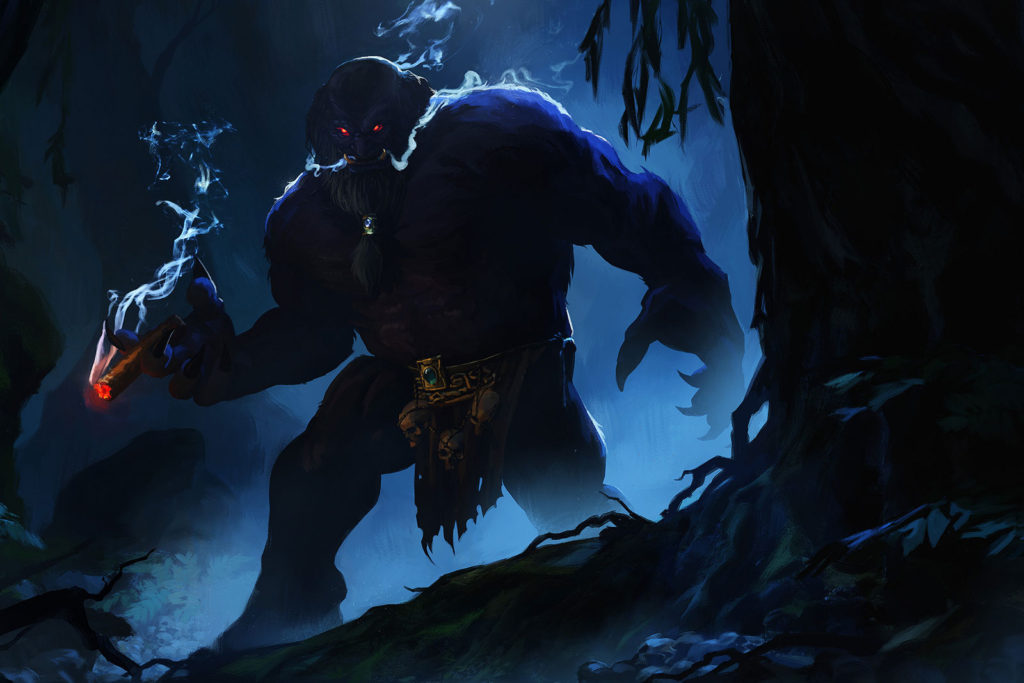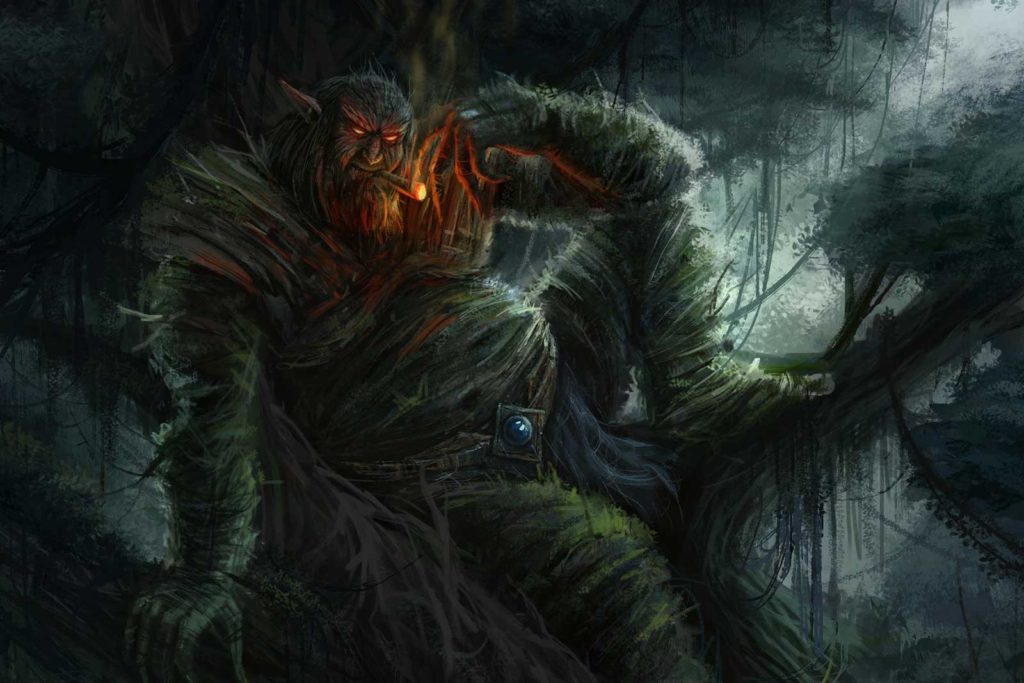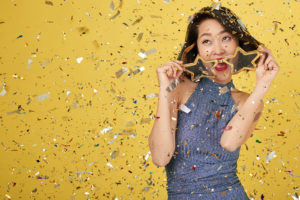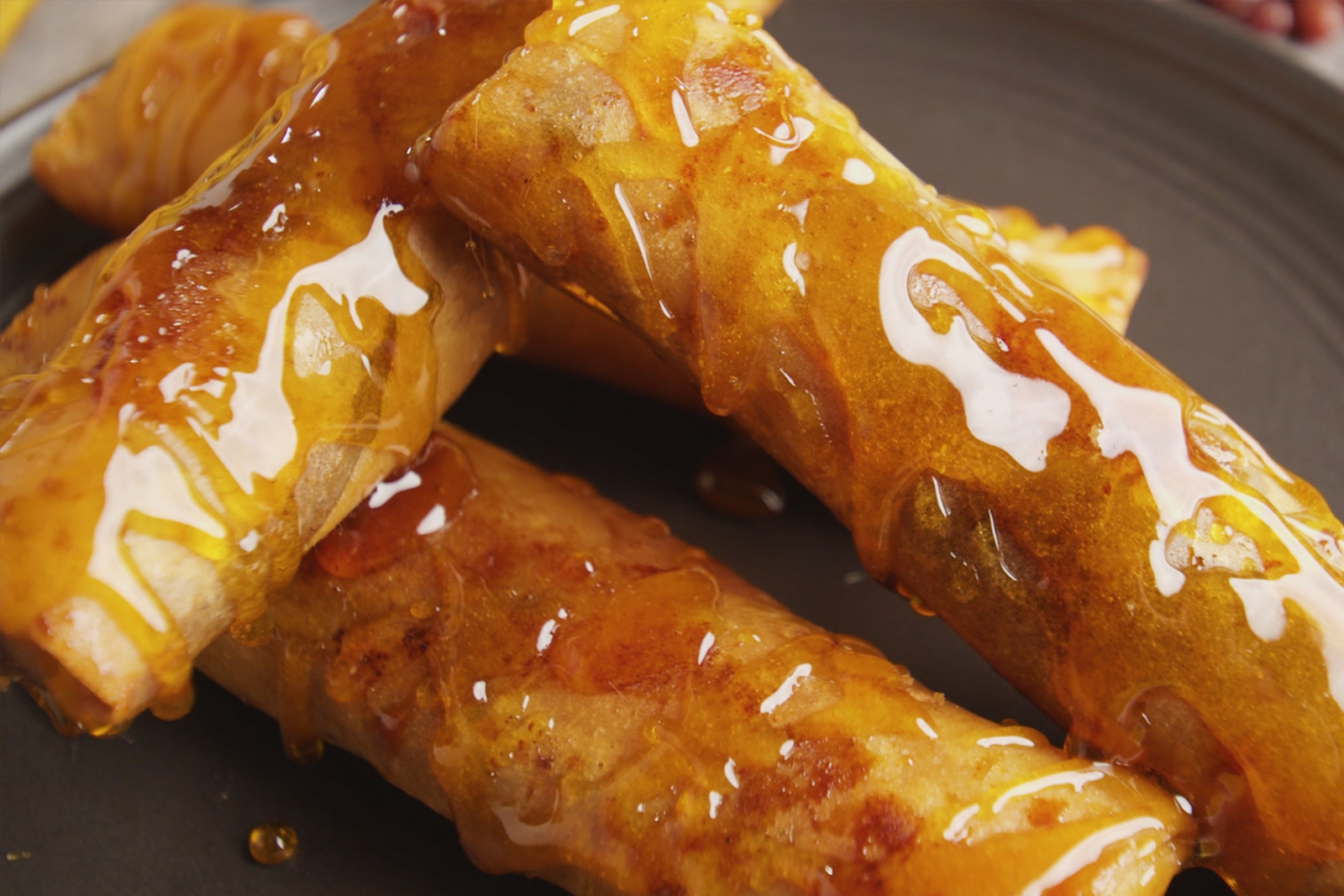
If there could be one benevolent creature that I know of, it would be the kapre.
I was first made aware of its existence when I lived in a small village in Las Pinas. Past the occupied houses and right after the basketball court, there was a bend in the road. The street was unpaved, full of wild grass, pine trees, and gnarled branches of another tree I never knew the name of. At night, upon sudden midnight cravings, I’d beg and beg my grandmother to buy me a snack. We’d go around the bend to the nearest, still-open sari-sari store and make an ecstatic return.
One night, we went out during a full moon. Though the lampposts blinked out to blanket us in complete darkness, the skies were bright enough to illuminate the path.
With one hand holding onto my pinipig ice cream, I pointed to the moon hiding in between the gnarled branches of the giant tree.
“Nanay, look.”
Her hand swatted mine in one swift motion. I dropped my arm and gazed at her in reproach.
She had her eyes fixed on the road. In swift Tagalog, she told me, “You don’t point to that tree – or to anything, for that matter, as it’s rude. And there’s a kapre in there. You don’t want to point at it.”

When we got home, I prodded her. Why wouldn’t I want to point at the kapre? I was on my toes for a thrilling story, eyes wide, but she dismissed my excitement.
“You don’t want the kapre in your window. You leave it alone, and it’ll leave you alone, too.”
I was disappointed, to say the least. As I grew up, I realized that most of the stories about the kapre were the same. It was a gigantic, dark creature who liked to smoke in large trees. It had no desire to mingle with humans or punish them for some crime. It simply existed.
“You don’t want the kapre in your window. You leave it alone, and it’ll leave you alone, too.”
Then, there were some exceptions: how it would get angry if you harmed the tree in any way or disturbed him from smoking. In a Youtube video by The Aswang Project, film director Peque Gallaga recounted a story where he heard of the white kapres and the black kapres. Needless to say, the latter was the malevolent one.
Whether a curse was to happen or a guaranteed death upon provoking its wrath, I never knew. There was a chance you could appease a kapre. It could even become your guardian if it took a liking to you. Like all other mythological creatures, offerings of food, gold, and in the kapre’s unique case, tobacco always worked.

But how did the kapre even come to be?
The origins of the kapre rely on theories on its etymology. In Gardner’s Philippine Superstitions, he mentions that the name “kapre” suggests an Arabic origin. He isn’t far off. The word could come from “kafir,” meaning non-believer, which turned into cafre in Spanish. The same video by The Aswang Project mentioned that the “cafre” had evolved to mean someone uncivilized or barbaric.
It could have been used to describe foreign African slaves – and in turn, our own indigenous group, the Aetas. Further proof is how the Visayan word agta means kapre and the Aetas at the same time. The myth of the kapre, then, could have racist roots in the name of colonization, a tale to frighten Filipinos from helping foreign slaves or their own countrymen. We can trust the evolution of language in the Philippines to turn the word “cafre” into “capre.” Finally, after the adoption of the Philippine alphabet, it has become its final form: kapre.
In Gardner’s Philippine Superstitions, he mentions that the name “kapre” suggests an Arabic origin. He isn’t far off. The word could come from “kafir,” meaning non-believer, which turned into cafre in Spanish.
No harm, no foul. That seemed to be the kapre’s philosophy, and I was determined to follow it. I repeat the four words in my head whenever I enter dark streets with large trees – acacias and mangoes hogging the entire sidewalk. Despite my attempts at reassuring myself, I refused to look up walking through dark streets like I did as a child, pointing to the gigantic trees with naivete. In my mind’s eye, I could gaze at the full moon. I could see the branches twisting into the blue-black sky and the smoke I’d mistake as fog.
I could imagine meeting those glowing red eyes, seeing a smoking pipe, and recognizing a curious creature watching me walk away into the night.
References:
Philippine (Tagalog) Superstitions, Fletcher Gardner, 1906
Kapre: The Tree Dweller | Philippine Mythology Documentary, The Aswang Project, 2015, retrieved at https://www.youtube.com/watch?v=GUrxlu1J0N8
























